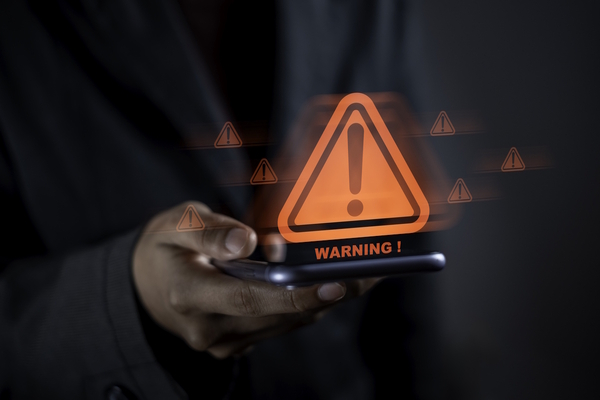Can blockchain leave its dark past behind?
Ten years after its inception, blockchain is on the verge of developing into a fully-fledged payments technology that will facilitate a second wave of digitalisation.
Although it was originally a decentralised electronic currency designed to bypass a dysfunctional banking system, bitcoin’s short history is pockmarked with unprecedented volatility, multi-million-pound losses and hackers making off with hundreds of thousands of the cryptocurrency. So much so that the reputation of the tech behind it, blockchain, has been severely compromised by association. But it’s a technology that is now coming of age, as its potential applications beyond bitcoin grow. Digital token economies However, labelling all cryptocurrencies as gambling is missing the point. As investment advisors often point out, each cryptocurrency project has a specific token economy model underlying it. Much like the systems used, for example, in prisons, where good behaviour is achieved by rewarding that behaviour with tokens, blockchain systems – lacking a central authority – use digital tokens to incentivise members to maintain the existing system. What distinguishes various cryptocurrency blockchains is the additional purposes of its tokens. In the classic case of bitcoin, tokens go to miners who verify transactions. In other blockchain ecosystems staking – saving up your tokens in your electronic wallet – becomes the desired behaviour. There are models that lend themselves more readily to traditional business transactions than others. In Ripple’s blockchain-based remittance model, a small percentage of the tokens transferred is burnt and thus indirectly awarded to the entire network as a fee by making remaining tokens more valuable . In another model, members of the blockchain community with underused assets, such as computing or storage capacity, rent them out to those that need them. This latter model, for example, has the potential of taking the sharing economy to the next level, eliminating yesterday’s as-a-service disruptors such as Uber or Airbnb as unnecessary intermediaries. Quasi-blockchains It is due to this diversity and the fuzziness of the term blockchain that writing off its future is problematic. Incumbents who are increasingly lending credibility to the technology by adopting it seem to be cherry-picking the qualities that define blockchain: that it is accessible, distributed, immutable, transparent and comes with a cryptocurrency. A case in point is the Ripple-powered international payment network that Spanish bank Santander has just rolled out in four countries, including the UK. Ripple is a blockchain-based remittance company that Santander already has a stake in since 2015. However, its cryptocurrency XRP has features so radically different from bitcoin that some refuse to call it a cryptocurrency at all. The first major difference is that Ripple didn’t design XPR to be an investment asset but to make the blockchain as fast and secure as possible. Ripple also did away with mining to eliminate the risks it poses and – an abhorrent idea for purists – centralised its blockchain to make its service fast and reliable as well as a highly appealing solution for big banks. Also, the Ripple blockchain is an example of a so-called private blockchain, which isn’t accessible to anyone, and where you don’t have individuals but trusted operators at the nodes. Thus, the Ripple blockchain becomes a closed system without the inherent weaknesses of the original blockchain (sluggishness and a voracious appetite for electricity), which basically turn it into a fintech platform which leverages the best features of cryptocurrencies. IBM’s incubator, Hyperledger (together with its enterprise-level version, Hyperledger Fabric), developed by Linux, is another step towards diminishing blockchain’s guilt by association with bitcoin. Hyperledger is a multi-project open-source collaborative effort created to advance cross-industry blockchain technologies. Hyperledger Fabric doesn’t require any built-in cryptocurrencies. As Brian Behlendorf, the executive director of the Hyperledger Project explains, “You’ll never see a Hyperledger coin. By not pushing a currency, we avoid so many [of the] political challenges of having to maintain a globally consistent currency.” The new mantra: tokenise! The sporadic examples of blockchain becoming increasingly mainstream in many different shapes and forms are reinforced by the recent wave of tokenisation: the conversion of rights to real-world assets into digital tokens on blockchain. Tokenisation has the potential to solve the real-world problem of illiquidity and will lead to a considerable expansion of the global market. Intangibles like copyright, brand recognition and goodwill sound like the natural products of an intangible market, but their value is hard to peg down. Nevertheless, when intangibles are turned into tokens and their legitimacy is guaranteed, the market will attach a specific value to them. Anything can be tokenised. Moving real-world assets (RWAs) to blockchain will make global trade much simpler and more democratic. Transactions will be secure and transparent, and commerce will be liberated from cumbersome legal and bureaucratic processes. Individuals can have partial ownership of non-fungible assets that they otherwise couldn’t afford the full ownership of. For example, on Maecanas, an art investment platform that aims to disrupt the art auctioning market, auction participants purchased a 31.5 per cent share of Andy Warhol’s 14 Small Electric Chairs for $1.7million. According to the rules of the platform, the owner of the RWA always keeps a 51 per cent stake in the artwork and covers its storage and security costs, while micro-owners get “dividends” when artworks are on lease to museums and galleries. Investment, also regarded as a tangible asset, is getting tokenised too. security token offerings (STOs) are the new initial coin offerings (ICOs) on today’s crypto-fundraising market, financial experts maintain. But while ICOs are often dubious operations staged by start-ups who need quick, unregulated access to crypto-currencies or fiat money – and leaving crowd-funders with not much more than utility tokens, if anything – security tokens are actual financial securities backed by something tangible such as the assets, profits, or revenue of the company. Bitcoin and blockchain purists such as Bobby Lee, founder and former CEO of Hong Kong-based Crypto Exchange, are outraged by businesses using the term blockchain to refer to what they see as corrupted versions of the digitalised, decentralised public ledger, claiming they are nothing more than databases with a twist. While Tim Berners-Lee, the oft-cited inventor of the World Wide Web and a staunch advocate of its re-decentralisation, shared his vision of how banks could use private blockchains all over the world at Ripple’s Swell Conference, he also warned that moving everything to blockchain mustn’t result in a false sense of security. Whether blockchain can retain its anti-establishment allure or will mature into an incorruptible enabler of the tokenisation of the existing economic system, remains to be seen.Nick Scheffer
Most Viewed
Winston House, 3rd Floor, Units 306-309, 2-4 Dollis Park, London, N3 1HF
23-29 Hendon Lane, London, N3 1RT
020 8349 4363
© 2025, Lyonsdown Limited. Business Reporter® is a registered trademark of Lyonsdown Ltd. VAT registration number: 830519543






